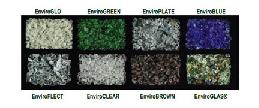
As we know it
Aviation technology has somehow managed to optimize the fuel efficiency through transitions in designs and frameworks. Today’s jets are revolutionary and robust structures whose powerful engines deliver enhanced output. It is an amazing fact that the new age flying beasts deliver 3.5 liters per 100 passenger-km. Now the goal before the future coming aircrafts like A380 & B787 would be 3 liters per 100 passenger-km travel.
One major drawback which aviation sector suffers is the excess consumption rate of fossil fuels – 2 percent of fossil reserves which alone represents up to 12 percent for the transportation sector. Kerosene/paraffin is the recognised JET- A-1 fuel used by the aviation sector. In 2005 alone the Jet A-1 consumption stood at 55 55 billion US Gallons which released 540 million tonnes of carbon dioxide in the atmosphere.
Need for change
Fuels form the core of every economy and it is having a retrospective relation with the transportation sector. As per ATA’s monthly report a change in the price of jet fuel subsequently affected the price of heating oil. Every single increase in a 42 gallons barrel ultimately hits the pockets of US passengers. Fuel expenses accounts to 25 to 40% of U.S passenger airline operating costs. In further to all this the extreme levels of carbon emission makes us all to think over cheap and renewable sources of energy.
1. Fat-derived Biofuel by North Carolina State University
What’s new?
Engineers from North Carolina have come up with a new bio-fuel technology that derives fuel from any fat source capable of powering jet airplanes. Popularly known as Crudus Potential in latin this technology is called as Centia. The researchers contend that the new process is 100% clean as no petroleum derived products are used in the process. Moreover Centia also propels gasoline automobiles. On April 2011, Centia was successfully deployed on the NASA jets.
What difference will it make?
Centia is an absolutely green biofuel product and it is not derived from any fossil fuel. The new product is also cheaper than methods of fuel making which feeds upon corn or carol oil. NASA has already showcased the zero emission advantages of this kind of fuel in its jets.
2. Solazyme’s algae jet fuel
What’s new?
Renowned Oil Company Solazyme Inc. has recruited an algae to produce world’s first microbial-derived jet fuel. Solazyme has developed algae which replicates in the absence of sunlight. The process has successfully cleared tests pertaining to density, thermal oxidative stability, flashpoint and freezing point distillation. US Navy has also used this algal fuel in helicopters like Solajet HRJ-5, MH-60S Seahawk by mixing it with other jet fuels.
What difference will it make?
Solazyme’s algae jet fuel is 100% cheaper and compatible jet fuel which can be used in any factory-standard engine. Researches prove that an acre of algae can produce 50 times more oil than any other method. This oil can be further blended with other bio fuels or synthetic fuels.
3.Researchers at Gevo convert plant scraps into jet fuel
What’s new?
Gevo, a startup company in Colarado has found ways to change plant scraps into jet fuel. Gevo’s new development is a yeast that makes butanol out of cellulose in wood chips. The developed butanol can be developed into jet fuel. Gevo has also entered into contract with chemical companies Lanxess, Total Petrochemicals, Toray Industries, United Air Lines and CDTECH.
What difference will it make?
In terms of energy, Butanol has got 30% more power than other biofuels like ethanol. More power advantages more efficiency which is also cleaner at the same time. Further to that, butanol’s atomic anomaly allows itself to be used as chemical products that refineries make from petroleum fuels. Gevo also develops catalysts and processing technology for producing isobutanol through feedstocks.
4. Plant-based fuel by University of Wisconsin-Madison
What’s new?
The collaborated research team of Wisconsin University at Madison engineers being headed by James Dumesic, Steenbock Professor, Chemical and Biological Engineering; Jesse Bond and David Martin Alonso (Postdoctoral Researchers) has created yet another environment friendly method which processes gamma-valerolactone into jet fuel.
About the project David Martin Alonso said that “The product we make is ready for the jet fuel application and can be added to existing hydrocarbon blends, as needed, to meet specs.”
Previously the research team worked on mechanisms to convert plant based sugar into fuel. However their works came to halt when they realised that the developed levulinic and formic acids of plant sugar needs more refining. With a new perspective they conducted fresh researches by taking levulinic and formic acids as base for fuel. They noticed an interesting fact that these two acids fuse together to form gamma-valerolactone (GVL). After that, the team successfully managed to develop jet fuel from GVL.
What difference will it make?
The Wisconsin-Madison method secures 95% of the energy from the parent product and requires very little hydrogen input. In this process, the product absorbs very little carbon which can be beneficial for future use. Since ethanol based fuels are composed of cellulosic biofuels they stand as a good replacement to gasoline. This fuel can reduce the carbon emissions by 80% and help us in maintaining the economic equilibrium.
Problems
The newly developed biofuels carry some minor drawbacks like costly mechanism, hazardous emission of by-products and requirement of huge biomass crop. After further developments only we can estimate that how much food production these processes demand.




